6 takeaways from The Charlotte Observer’s mobile newsrooms
Lisa Vernon Sparks, The Charlotte Observer,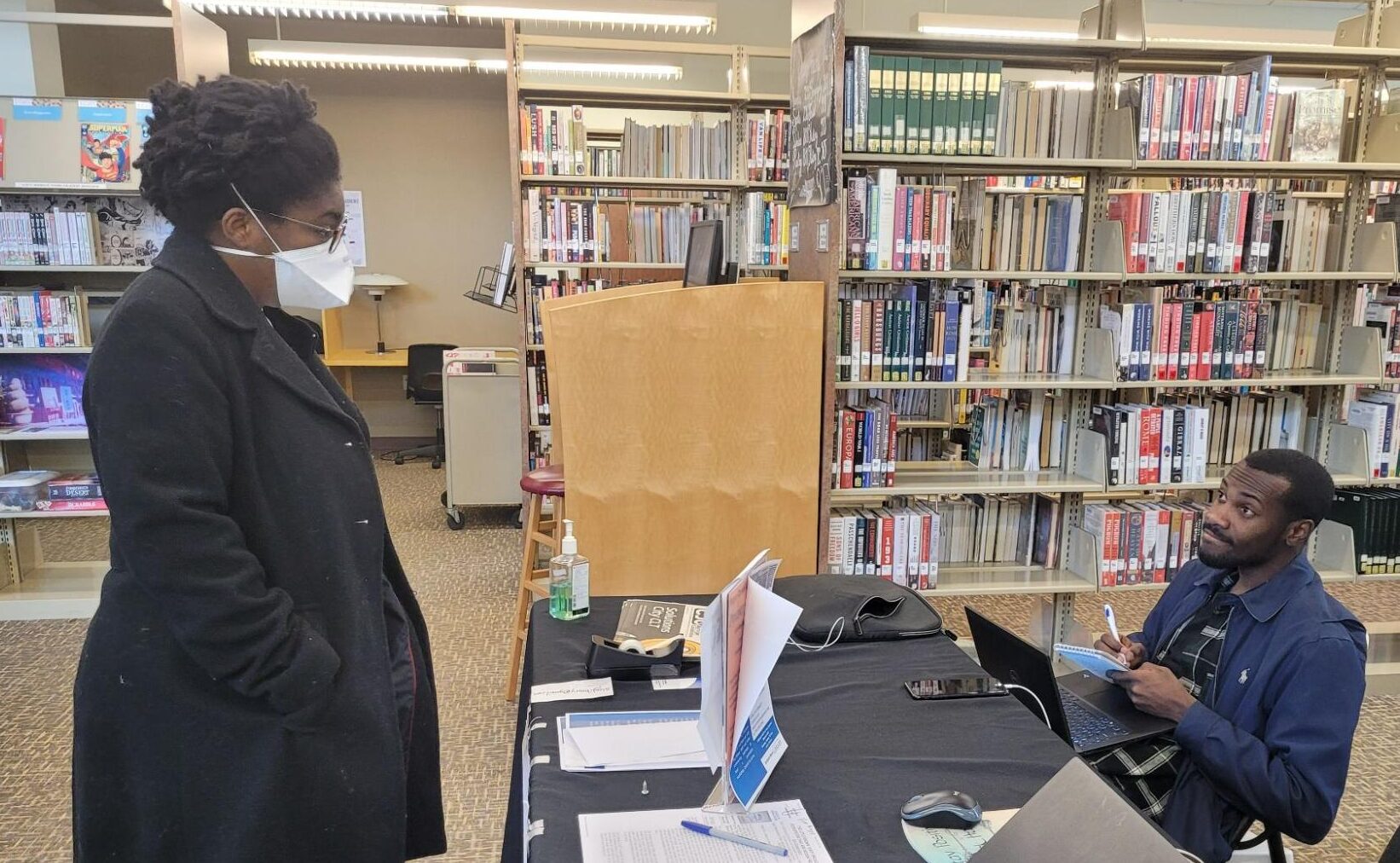
A library patron speaks with Charlotte Observer reporter DJ Simmons at the Hidden Valley Mobile Newsroom. (Photo by Lisa Vernon Sparks/The Charlotte Observer)
Here’s an idea to steal and adapt: A mobile newsroom offers authentic and organic opportunities to connect with historically underrepresented communities and report on them in ways we never have before.This is a series on Better News to a) showcase innovative/experimental ideas that emerge from the Knight-Lenfest Newsroom Initiative and b) share replicable tactics that benefit the news industry as a whole.
This piece features takeaways from Lisa Vernon Sparks, race, culture and community engagement editor at The Charlotte Observer, which participated in the Table Stakes Major Market cohort in 2019 and API’s Communities Sprint cohort in 2022.
A mobile newsroom might evoke visions of a traveling band of journalists in an RV making pit stops along a chosen route. As adventurous as that might have been, what we set out to do was to establish a stronger presence in Black and brown communities that have been historically underreported on by The Charlotte Observer. We did that by bringing the newsroom to the people. Many people have never met a journalist, and many don’t understand how we work to produce the news, the choices we make. Not knowing who we are is the main fuel of distrust and we wanted to change that. We also wanted to hear what stories people thought were missing from the news cycle and to do a better job of covering these communities more completely, beyond parachuting in when something bad happens.
We accomplished that goal. The Charlotte Observer launched its first mobile newsroom in the Hidden Valley community on Jan. 17 and moved to a second site on April 3 in the Beatties Ford Road corridor that is home to a cluster of smaller communities. Each of these neighborhoods has a large Black population and, in the case of Hidden Valley, is increasingly Hispanic. In each location, a rotating team of roughly 14 journalists (eight at Hidden Valley, six at Beatties Ford Road) including myself, took up residency for six-to-seven weeks in a centralized location within the community, with one to two journalists typically on site at a given time.
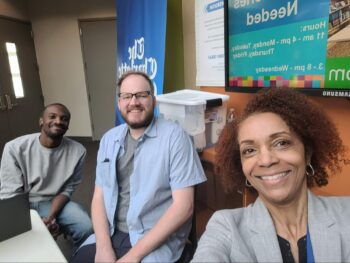
Reporter DJ Simmons; Audience Editor Zach Dennis; and Race, Culture and Community Engagement Editor Lisa Vernon Sparks at the Beatties Ford Road Mobile Newsroom at the Allegra Westbrooks Regional Library (Photo by Lisa Vernon Sparks/The Charlotte Observer)
Preparations entailed extensive planning, meeting with community leaders and especially securing a mobile newsroom location. We partnered with the Charlotte Mecklenburg Library on this endeavor to secure space, set up a newsroom (basically ourselves, a table, a few chairs, laptops and our company banner) and be a daily presence.
We also hosted a few community events, including a panel about gentrification, a huge concern in many of Charlotte’s historically Black neighborhoods. Our efforts caught the eye of senior leadership in McClatchy and in other media, notably a write-up in Editor & Publisher, about new ways of covering local communities.
Here are six key takeaways from our experience:
Seek community partnerships
Early in the process, The Charlotte Observer sought buy-in from community organizations within our targeted neighborhoods. The initial assumption was that The Observer would be welcomed, but that wasn’t always the case. It’s important to seek alliances with these organizations and alert them to the coming newsroom presence and why we are coming. Transparency is the key. That meant connecting with the Hidden Valley Community Association.
At our second site along Beatties Ford Road, we met with several groups that comprise the Historic West End Neighborhood Association and For The Struggle nonprofit. It was the beginning of conversation and learning what stories are missing from the news cycle. It was the first listening session that helped steer coverage and began to revive discourse long silent.
A huge part of making local connections called for developing an alliance with the Charlotte Mecklenburg Library. Additionally, local organizations, not necessarily grassroots nonprofits, are great places to engage with residents. We compiled a list of sites in the vicinity where reporters could go and also engage with residents instead of simply sitting in the library. Some of these places were senior centers, local cafes and parks.
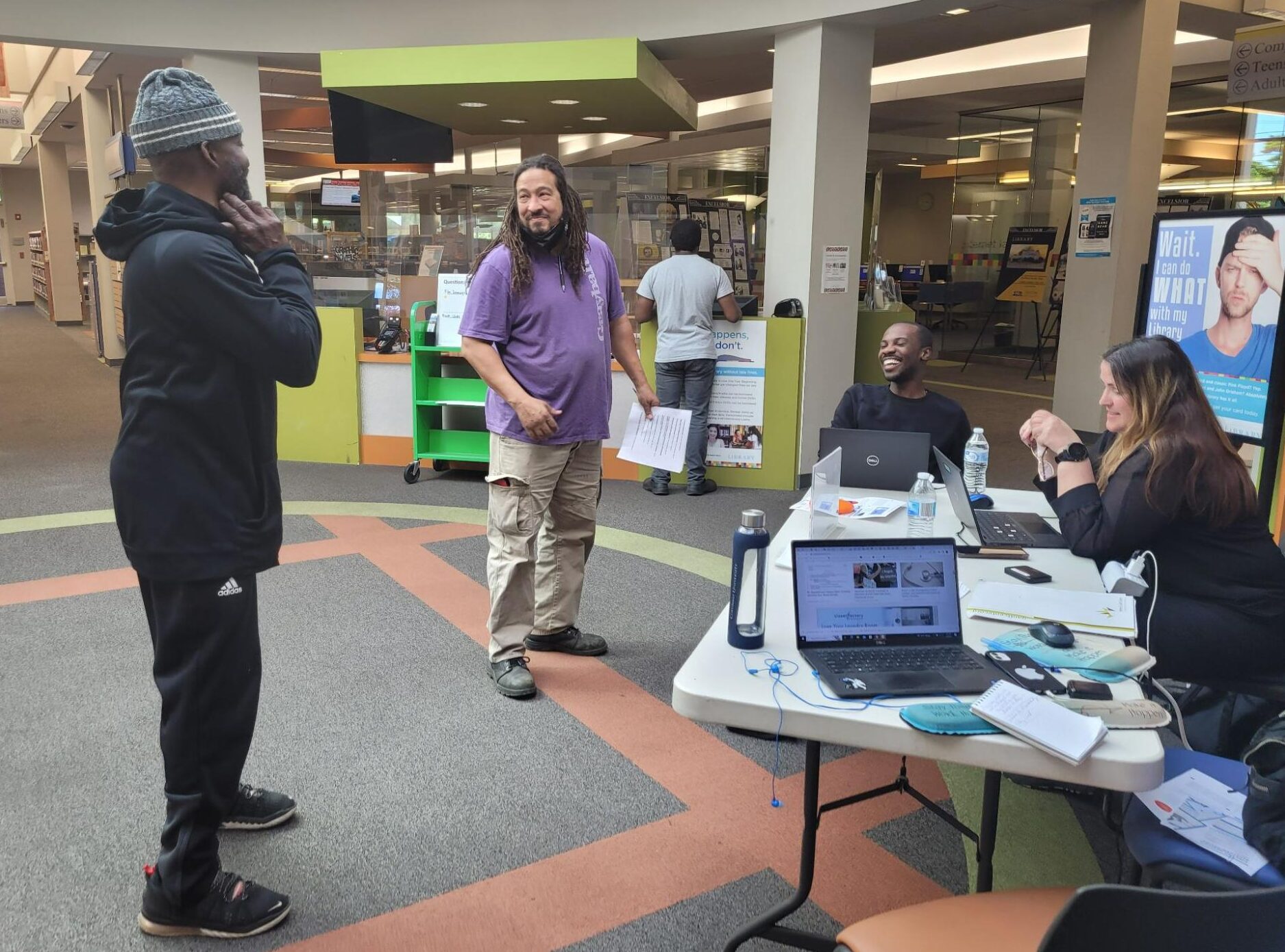
Two library patrons, reporter DJ Simmons and retail reporter Kitty Muccigrosso talk at the Beatties Ford Road Mobile Newsroom at Allegra Westbrooks Regional Library. (Photo by Lisa Vernon Sparks/The Charlotte Observer)
Choose your location for impact
Choose communities where your publication can make the most impact in a timely manner.
We chose our pilot location as Hidden Valley, in northeast Charlotte, because it had a rich history of Black homeownership following urban renewal in the late 1960s that led to the demolition of Brooklyn, a Black resident hub prior to 1968. It’s also a community that often received a bad rap because of its proximity to another more crime-ridden area – Sugar Creek. Our second site covered several smaller, mostly Black neighborhoods in the Beatties Ford Road corridor, a major thoroughfare heading north and west of Charlotte’s center. The Ford, as it’s called, also has a rich history, but is undergoing change as old homes are being razed and new, larger homes are being built.
With the library, we had a central location that the community was familiar with, and this guaranteed good traffic most days. At our Hidden Valley location, we set up in the back of the library, which probably wasn’t the best spot. At the Beatties Ford Road site, we were situated in the front of the library so patrons would see us upon entering. In that regard, we were more successful with engagement.
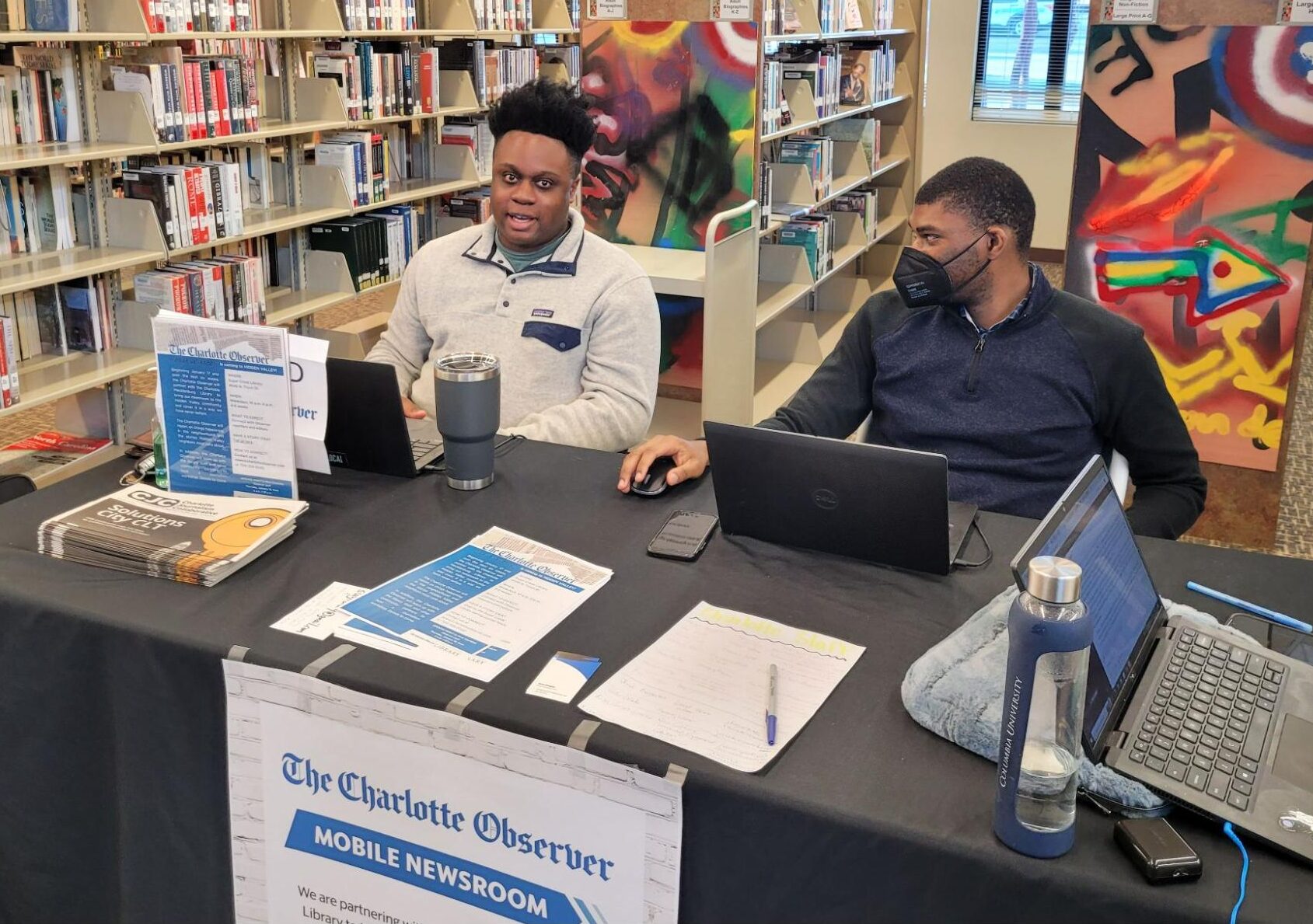
Service journalism reporter Evan Moore and service editor Kendrick Marshall discuss story ideas at Hidden Valley Mobile Newsroom. (Photo by Lisa Vernon Sparks/The Charlotte Observer)
Anchor results
Showcase the great new work being produced by your team and share it often on social media. The Observer created a landing page for this purpose. We also had various promotions on social media (TikTok, Instagram) for open houses to meet the staff. Tweet often.
Another vertical we launched was Kaleidoscope, an essential newsletter for conversations about race, culture and equity. It’s a place where we feature many of the stories we wrote, as well as a column centering on relevant topics, events and related topics we are reading. It’s important to create a newsletter landing page for people to view past editions.
All told, from the Hidden Valley mobile newsroom we published 26 stories, including promo stories. In Beatties Ford Road, we wrote 25, mostly stories that may not have been written otherwise.
Be digitally savvy
While we still used pen and paper to gather visitor’s names, contact information and story ideas, we also set up an email address that residents could use to contact us.
In hindsight, it would have been good to have an iPad onsite for people to sign up for online subscriptions. We used QR codes in our promo stories, but it would have also been helpful to have a QR code on a slip of paper for visitors to scan to subscribe.
We also created a way to track engagement and increases in pageviews on stories produced from the mobile newsroom on each day. With an Adobe analytics tracking system, we isolated the ZIP codes where the newsroom was located and compared the data for the same period a year earlier. This gave us insight into which stories were being read by residents in the areas where the mobile newsroom was located. Early in the process, we worked very closely with our audience editor to craft pageview goals.
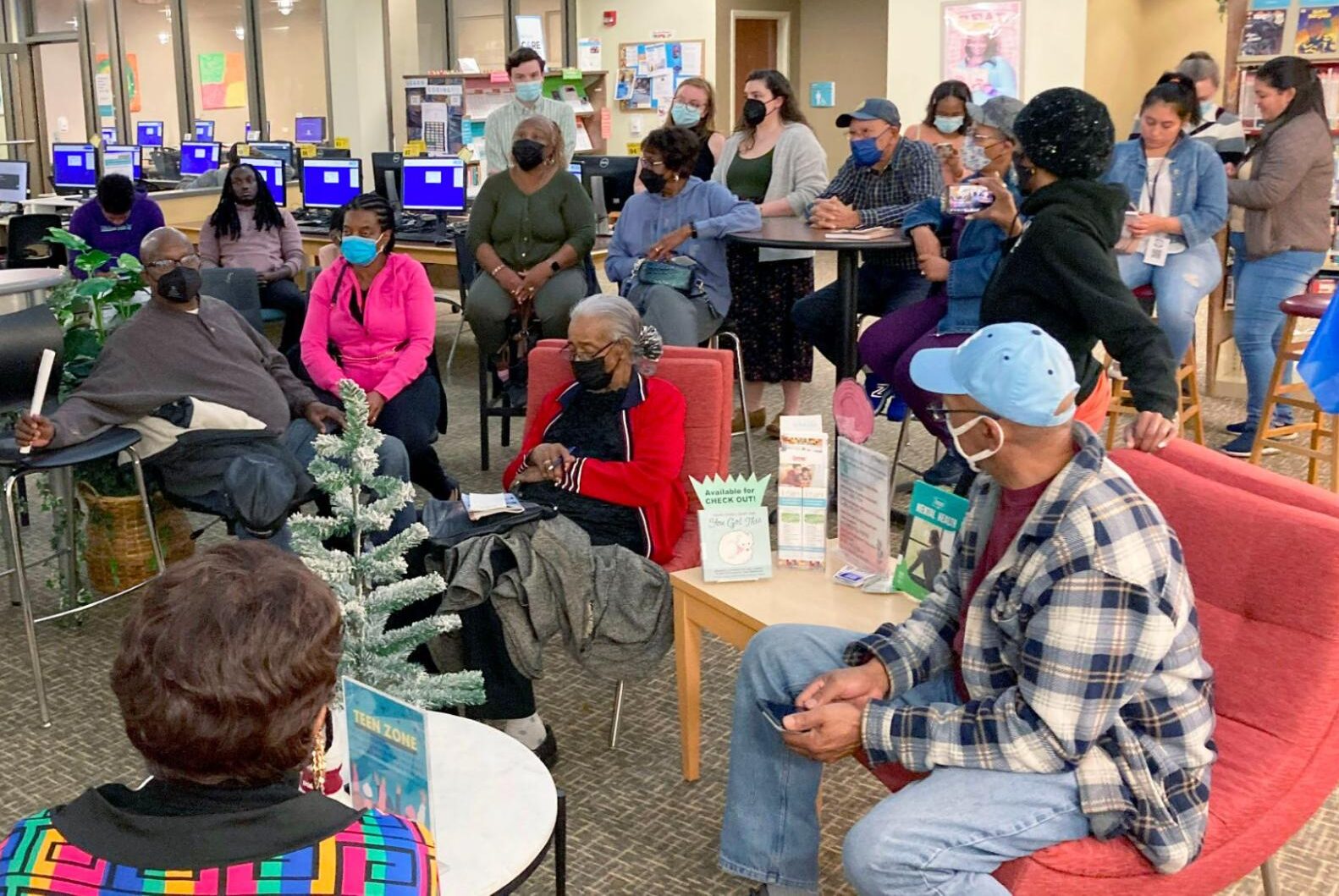
Residents from Hidden Valley gather at the Sugar Creek Branch library on Jan. 21, 2023, for The Charlotte Observer “Meet the Staff” Open House. (Photo by The’ Pham/The Charlotte Observer)
Plan engagement events
In addition to being present every day, a good plan and calendar should be in place early on for ancillary in-person engagement events. There is a lot of flexibility with that.
In Hidden Valley, we connected with the local elementary school and set up a schedule for staff to read to students in primary grades. It took a few meetings with the school’s principal and a community liaison to organize this, but it was really worth it to connect. We still hope to organize a career day with the high school and/or middle school students.
Stay connected
This is probably the most challenging part of the mobile newsroom effort – when the daily residency in a community ends. The point of this was to rebuild trust in these communities that have lost faith with The Charlotte Observer. That’s achieved through old-fashioned journalism: calling sources and people we engage with and keeping a handle on what is happening in these communities. We also need to set up new ways to engage with these communities now that we have established a rapport with them. We want to explore monthly chats with reporters at coffee shops or continued listening sessions with different organizations.